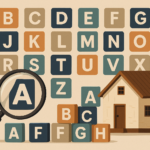
Key takeaways
Labor's election win signals more pressure on our housing markets, as their proposed policies will unintentionally worsen the already critical supply-demand imbalance.
The Government promises to build 1.2 million new homes are unrealistic, given current construction capacity constraints, builder insolvencies, labour shortages, and planning bottlenecks.
Blaming property investors is misguided — they’re not the cause of the housing crisis but part of the solution by providing much-needed rental accommodation.
Policies aimed at disincentivising investors (like removing negative gearing or increasing land taxes) will discourage private rental supply and drive up rents.
High migration targets without corresponding housing supply are fuelling demand-side pressures, leading to skyrocketing rents and worsening affordability.
Short-term populist policy changes won't fix structural issues in housing — what’s needed is long-term reform addressing planning, zoning, infrastructure, and incentivising development.
Rather than solving the crisis, Labor risks ‘pouring petrol on the fire’ by pushing policies that could shrink supply and escalate the affordability problem.
Australia is in the grip of a housing crisis — and if you're hoping our new government will be the solution, I hate to break it to you…
They might just make things worse.
While Labor’s fresh election win was met with plenty of optimism, especially around their promise to tackle housing affordability, when you look past the headlines and into the details, it becomes clear that their policies could pour petrol on an already raging fire.
You see, we’ve already got an undersupplied rental market, construction costs are through the roof, builders are going bust left, right and centre, and skilled trades are in short supply.
Yet somehow, the government thinks now is the time to ambitiously target 1.2 million new homes — a figure that’s more fantasy than feasible.
At the same time, they're flirting with policies that punish the very investors who provide rental accommodation — think adding new compliance burdens - all this while encouraging strong migration and population growth that will only increase housing demand.
It’s a classic case of good intentions with potentially disastrous outcomes.
If you take a closer look — and remove the political spin — it’s clear that while Labor’s policies may be well-meaning, they are largely demand-side focused, without meaningfully addressing the chronic supply shortage plaguing Australia’s housing sector.
As a result, we’re likely to see even more pressure on property prices in the years ahead.
Let’s unpack what’s happening — and why.
1. Labor’s First-Home Buyer Support Will Surge Demand
Labor has promised to significantly expand support for first-home buyers.
This includes:
- Allowing first-home buyers to purchase with just a 5% deposit without needing to pay expensive Lenders Mortgage Insurance (LMI).
- Raising the property price caps in many regions, meaning more expensive properties now qualify for assistance.
- The existing "Help to Buy" shared equity scheme will also be broadened.
On the surface, this sounds wonderful for aspiring homeowners, but economically, it’s a recipe for disaster.
Why?
Because injecting more buyers into the market with easier access to credit turbocharges demand, without adding new stock immediately.When you give buyers more firepower but don't create enough new homes, the natural result is price inflation.
We’ve seen it before: Every time first-home buyer incentives are expanded, it boosts demand and temporarily helps individuals into the market, but collectively it pushes prices even higher for everyone.

Note: Labor's policy addresses affordability for individuals in the short term but worsens affordability systemically in the long term.
2. Immigration Policy: Population Growth Will Outpace Housing Growth
At the same time, Labor has made it clear they will not slow immigration.
- Australia’s immigration intake is forecast to remain high, with around 1.8 million new migrants expected over the next five years.
- This figure includes international students, skilled migrants, and family reunification streams.
There’s no question that immigration is vital for Australia's economy — especially to fill workforce shortages.
But in the context of an already under-supplied housing market, it acts as a huge demand-side shock.
Most new migrants settle in Sydney, Melbourne, and Brisbane, the same cities already experiencing severe housing shortages.
As I’ve explained many times on Property Update:
"We simply can’t accommodate record migration flows when we aren’t building enough new homes."
Labor’s failure to meaningfully tie immigration policy to housing supply realities will add further fuel to already stretched property markets.
3. Labor’s Supply Solutions Are Too Small and Too Slow
To be fair, Labor recognises the supply problem, but its proposed solutions are simply not big enough or fast enough to matter.
- Their $10 billion Housing Australia Future Fund aims to build 30,000 new social and affordable homes over five years. That’s only 6,000 homes a year
- An additional 100,000 new homes are promised under various federal-state partnerships for first-home buyers.
But here's the reality:
- Australia needs around 240,000 new dwellings per year to meet population growth (and that’s a conservative figure).
- Currently, we're building fewer than 170,000 dwellings per year.
- Even if Labor delivers every promised new home (which is far from guaranteed), it barely makes a dent in the supply deficit.
And let’s not forget these headwinds…
- A severe shortages of skilled tradespeople
- Soaring construction costs (up over 30% over the past three years)
- Ongoing planning bottlenecks and NIMBY resistance at local councils
In other words, their supply-side solutions are a drop in the ocean compared to the tsunami of new demand they are encouraging.
While the federal government is throwing money at housing supply, here’s what’s not being talked about:
A huge chunk of the cost of building a home isn’t just labour and materials, it’s taxes, levies, and charges paid straight to state governments.
Once upon a time, providing infrastructure like roads, water, sewerage, and parks was seen as the state government's responsibility.
But not anymore.
They’ve shifted the cost onto developers, who naturally pass it straight onto buyers.
So in reality, any federal funding aimed at boosting housing supply is just a backdoor subsidy to the states, helping them maintain their revenue streams, not necessarily building more homes faster.
And even if the money was perfectly targeted, there’s a bigger problem:
Who’s actually going to build these homes?
At the moment, the construction industry is already stretched thin:
Most tradies are tied up building roads, tunnels, and bridges, thanks to the massive public infrastructure boom, while the residential construction sector is bleeding skilled workers.
There simply aren't enough people available to deliver the number of homes we urgently need.
Why?
Because the two main pipelines for construction workers - apprenticeships and immigration - are broken.
- Apprenticeship numbers have been falling for years, and the system isn’t producing enough new tradies.
- Immigration settings have failed to bring in the skilled construction workers we desperately need.
While Labor says it plans to tweak the migration system to prioritise more tradies, nothing concrete has been announced yet.
Specialist visas seem to be on the way out, and while there’s talk of including construction skills in the permanent migration intake, it’s all vague promises at this stage.
This is all just another example of well-meaning policies that look good on paper but won’t fix the real, structural problems driving Australia’s housing crisis.
The Real Risk: A Two-Speed Housing Market
One likely outcome is a two-speed housing market:
- Well-located properties in capital cities (especially Sydney, Melbourne, Brisbane) will become even more expensive.
- Outer suburban areas and regions will experience patchy growth at best, with affordability still a major challenge.
This will deepen the wealth gap between existing property owners and those trying to break into the market.
It will also put enormous pressure on renters, as demand spills into the rental sector and tight vacancy rates drive rents even higher, a phenomenon we're already seeing.
What Needs to Happen Instead?
If policymakers were serious about fixing housing affordability, they would focus on:
- Accelerating approvals for new housing developments, particularly infill developments in established suburbs.
- Massively investing in infrastructure to unlock new suburbs for development.
- Incentivising private sector investment in build-to-rent and affordable housing projects.
- Incentivise private property investors to provide rental accommodation for the third of Australians who are not able to I don’t want to rent, rather than keep taxing them.
Simply helping more buyers get loans doesn’t solve the problem - it just creates more competition for too few homes.
The only real, lasting solution is to build more homes, faster, in the right places.
Final Thoughts: Why Property Investors Should Pay Attention
From an investor’s point of view, Labor’s policies, ironically, represent opportunity.
In the short to medium term:
- More demand + restricted supply = price growth.
- Strong population growth will underpin rental demand and rental yields.
- Quality assets in inner- and middle-ring suburbs will continue to outperform, simply because scarcity drives value.
However, investors must be highly selective. Not all locations and not every property will benefit equally.
Strategic, investment-grade assets in supply-constrained locations will be the winners, while poor-quality stock will increasingly be left behind.
At Metropole, we understand these dynamics intimately. Our strategic advice helps clients position themselves ahead of the market rather than chase the crowd.
Why not take advantage of this window of opportunity window and organise a confidential chat with one of Metropole’s Wealth Strategists to discuss your options? Click here now to lock in a time.

















